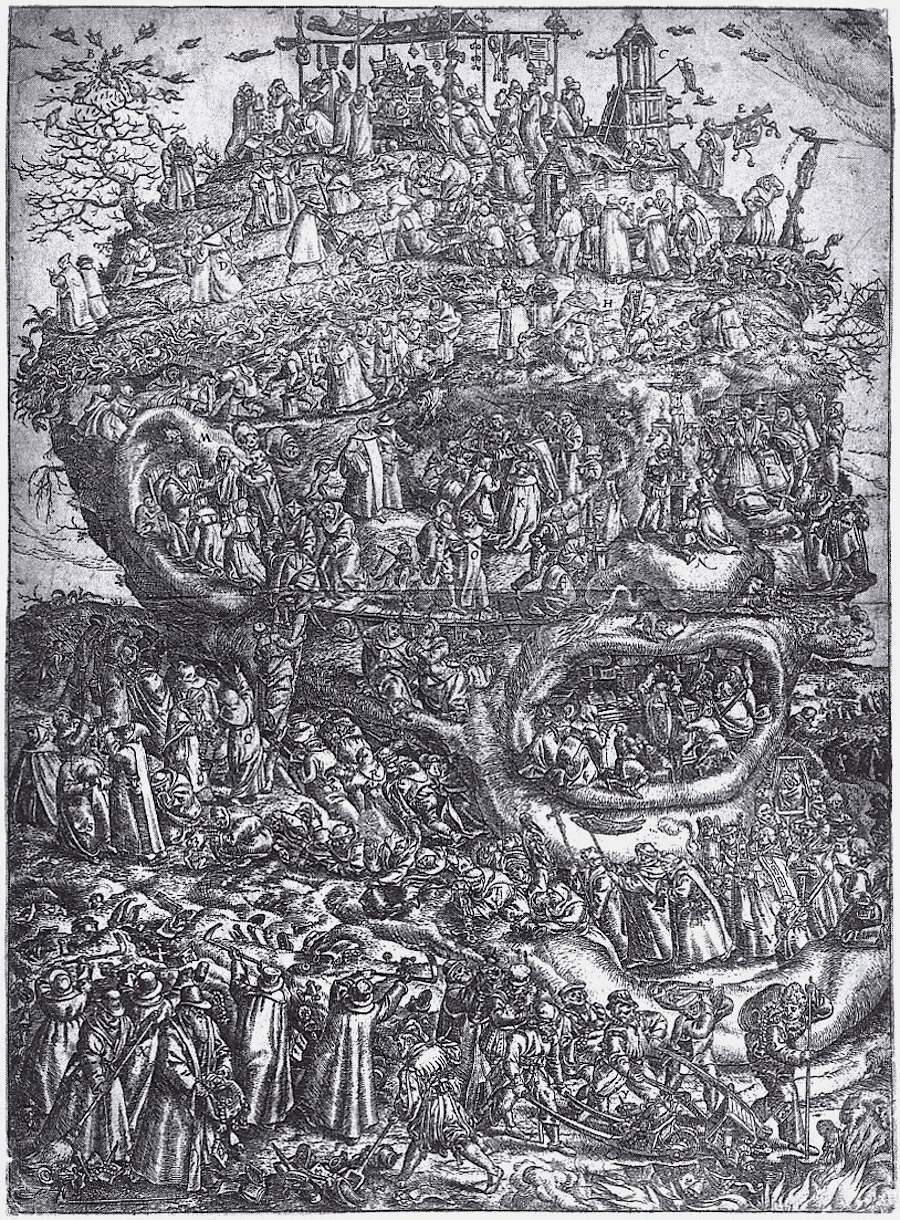
Prior to the Renaissance, landscape was principally used as a scene-setting backdrop for figurative art. Trees, fields, mountains, and storm-tossed seas were only present to add verisimilitude to the human activity contained within the frame. It seemed as if landscape was nothing without a human narrative. But this gradually changed. Landscape painting soon became an artistic form of its own. During the transitory period between the two forms there was a moment when figurative art and the desire to depict landscape briefly coalesced in anthropomorphic etchings and paintings.
These pictures generally depicted a face hidden within the landscape–as if suggesting the land’s significance was shaped by how humans used it. This was particularly true for a variety of artists in 17th century Netherlands who produced work where hidden giant human heads appear to grow out of the landscapes.

A typical anthropomorphic landscape of a bearded man’s profile in repose by Athanasius Kircher (1602-80)–a Jesuit priest, scholar and polymath. The image was “inspired by a story related by Vitruvius about the 4th-century-BC architect Dinocrates’ plan to sculpt into Mount Athos a colossal image of Alexander the Great, who would hold a small city in one hand and with the other pour a river into a sea by means of a gigantic pitcher.” Kircher’s more restrained etching was featured in his Ars magna lucis et umbrae (1645/6).
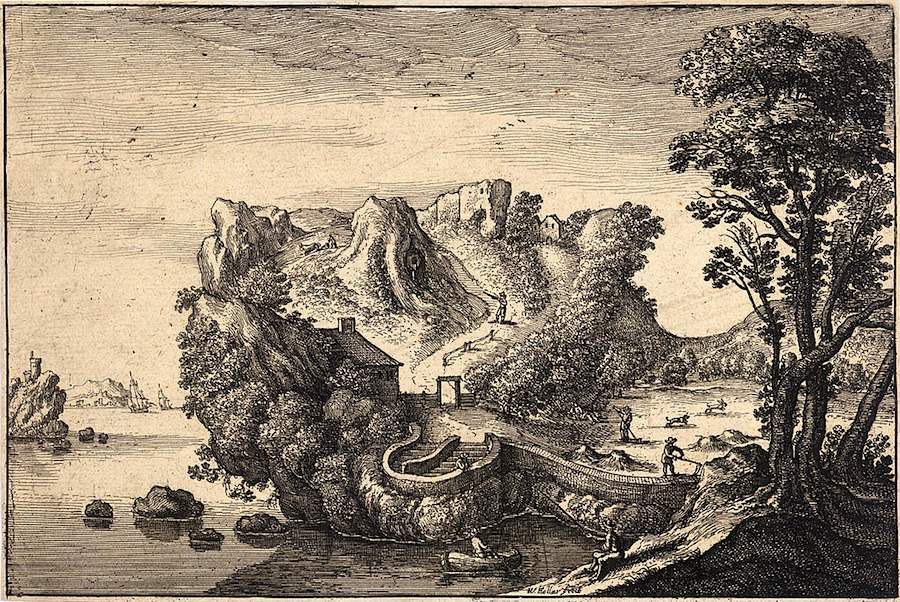
Renowned etcher Wenceslas Hollar‘s (1607-77) version of Kircher’s landscape, with more fashionably trimmed beard and hair.
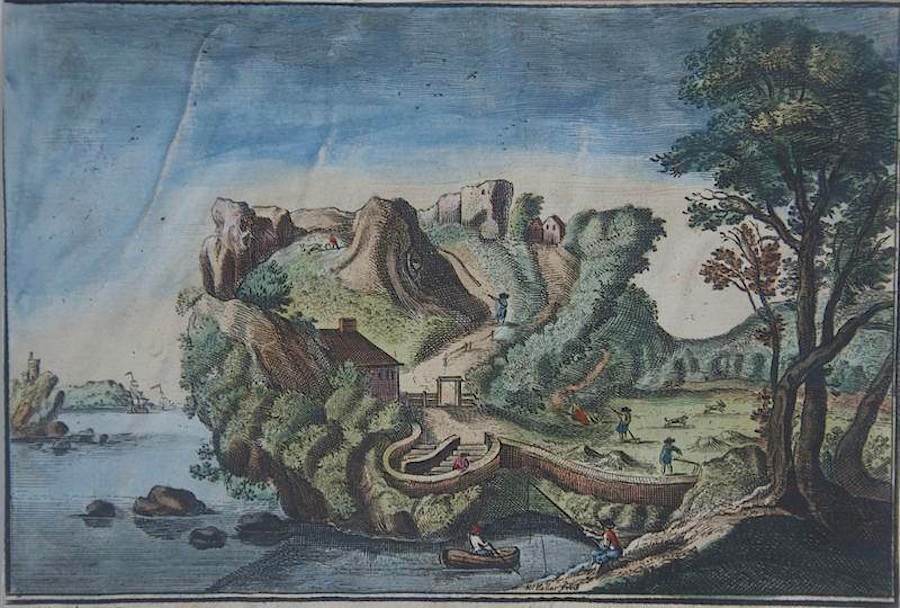
A hand-coloured version of Wenceslas Hollar’s head circa 1797.
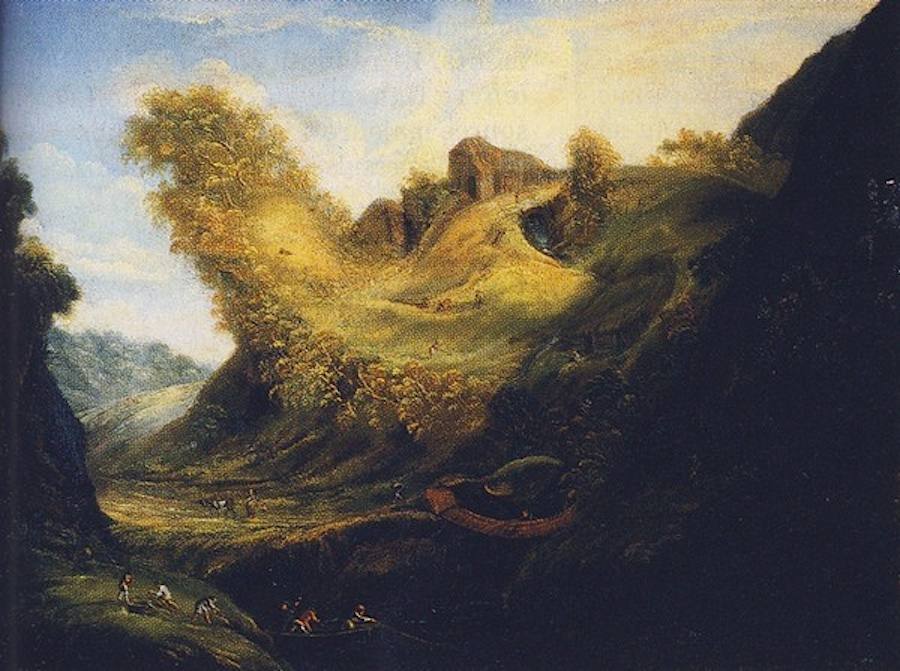
Painting by Matthäus Merian the Elder (1593-1650) continues the tradition.
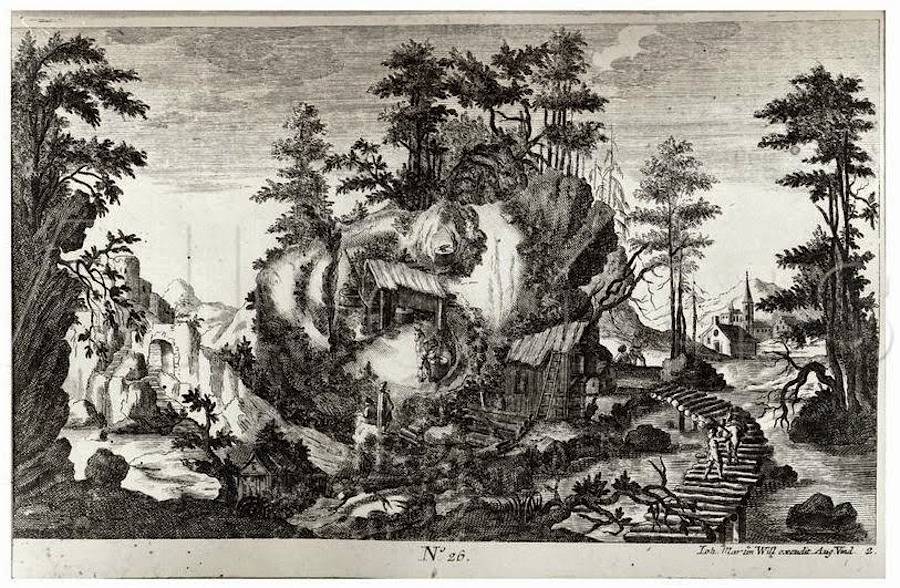
A more classical anthropomorphic landscape by Johann Martin Will.
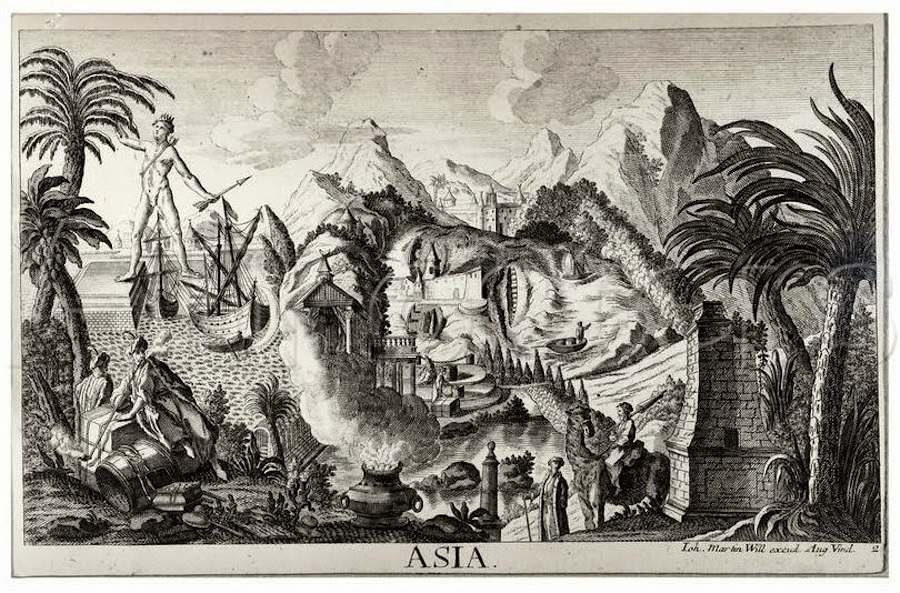
Johann Martin Will’s anthropomorphic landscape of Asia.
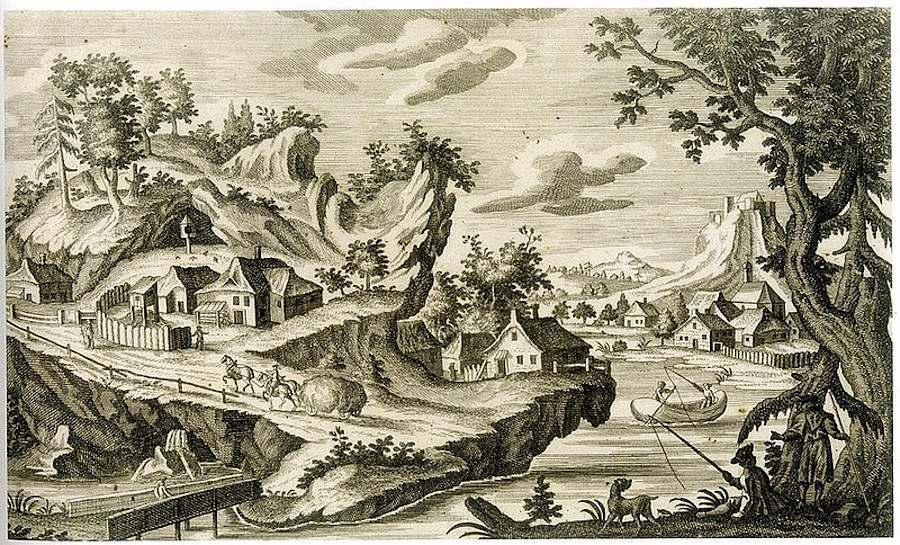
More from Johann Martin Will–this time a far more detailed landscape, ca. 1780.
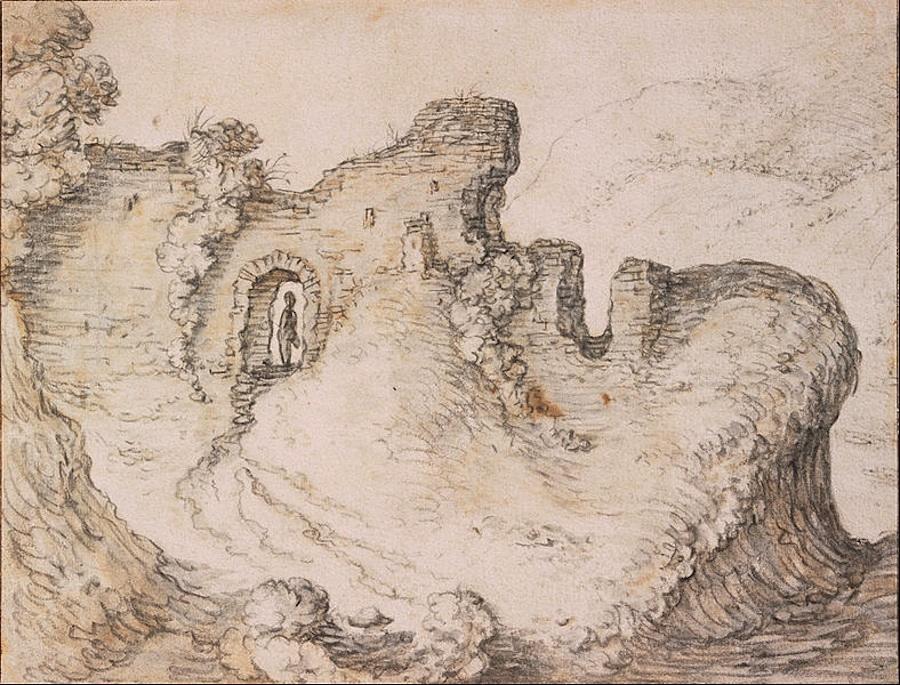
Rocky landscape with man’s face by Dutch artist Herman Saftleven the Younger, ca 1650.
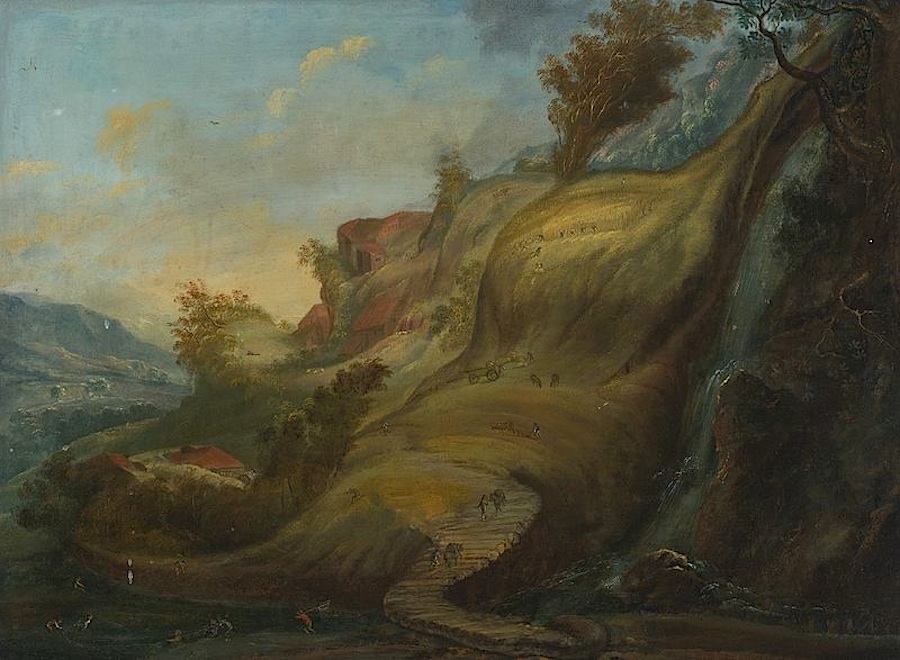
A beautiful and more subtle image–this time a painting by as yet unidentified artist though may possibly be Matthäus Merian the Elder. This painting contains a head and what appears to be a leg of some dead animal.

The landscape is beginning to dominate, but it’s still possible to see a face hidden in this painting The Sleeping Peddler Robbed by the Apes by Herri met de Bles, ca. 1550.
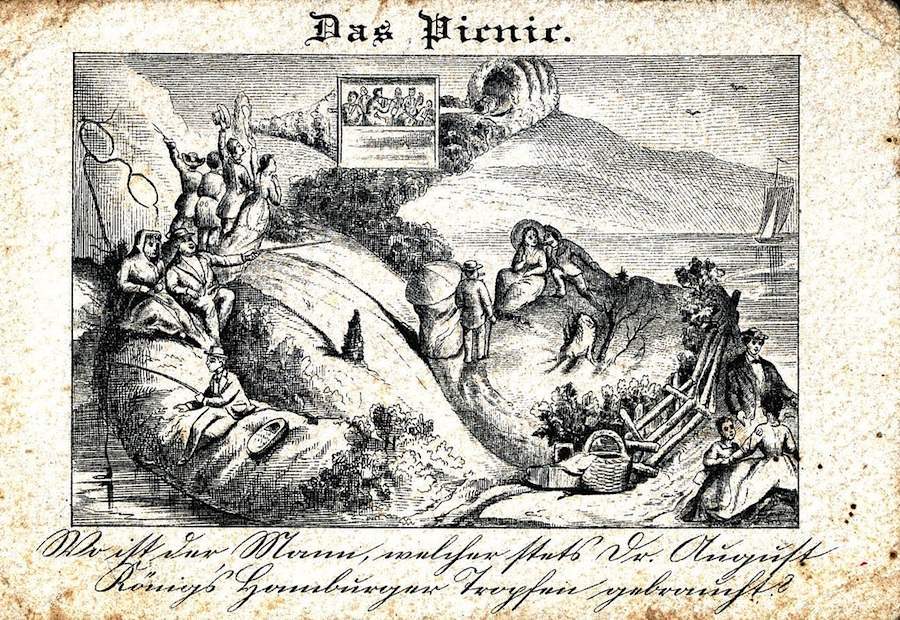
The idea of a figure with a landscape was later used for advertising as in this ad for Dr. August König’s Hamburger Tropfen, 19th century.
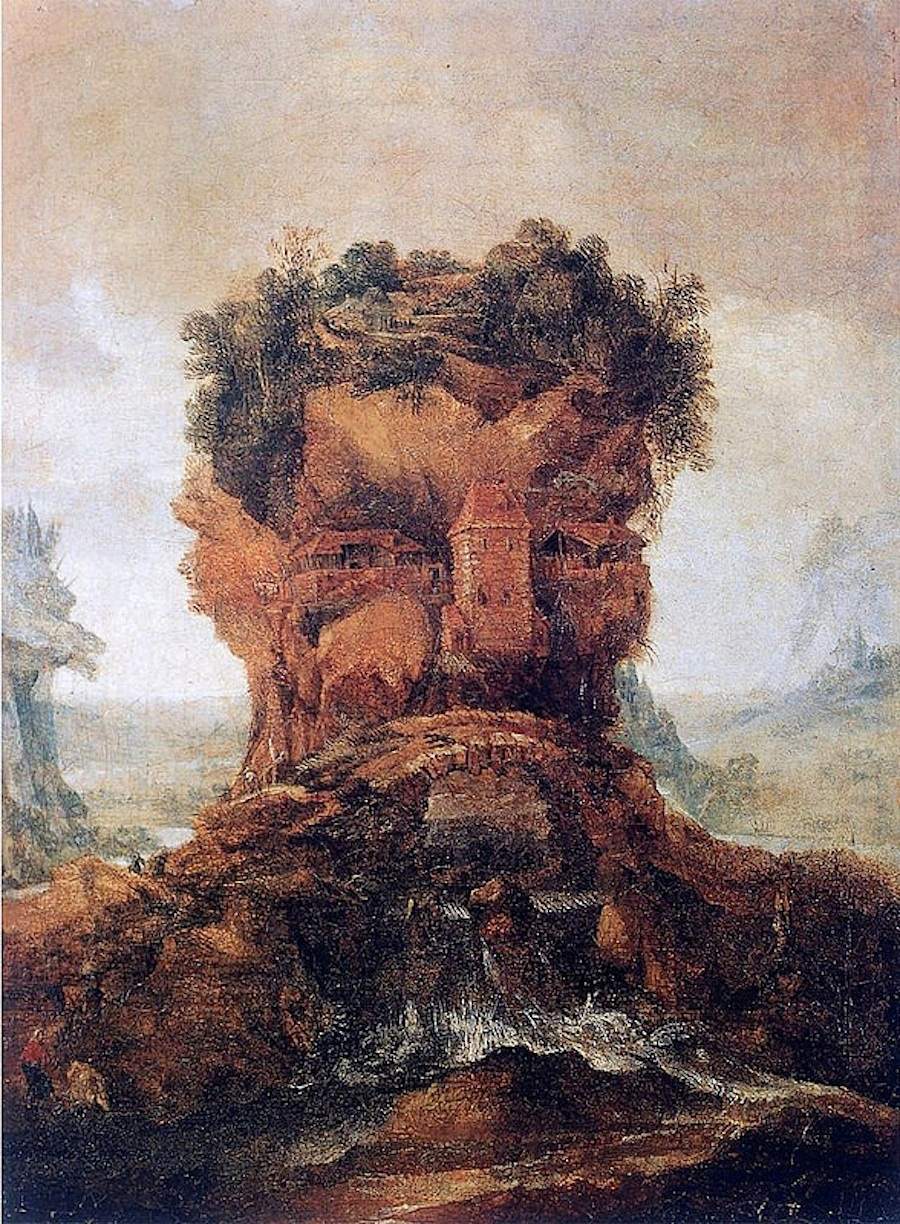
Joos de Momper’s Summer, early 17th-century.
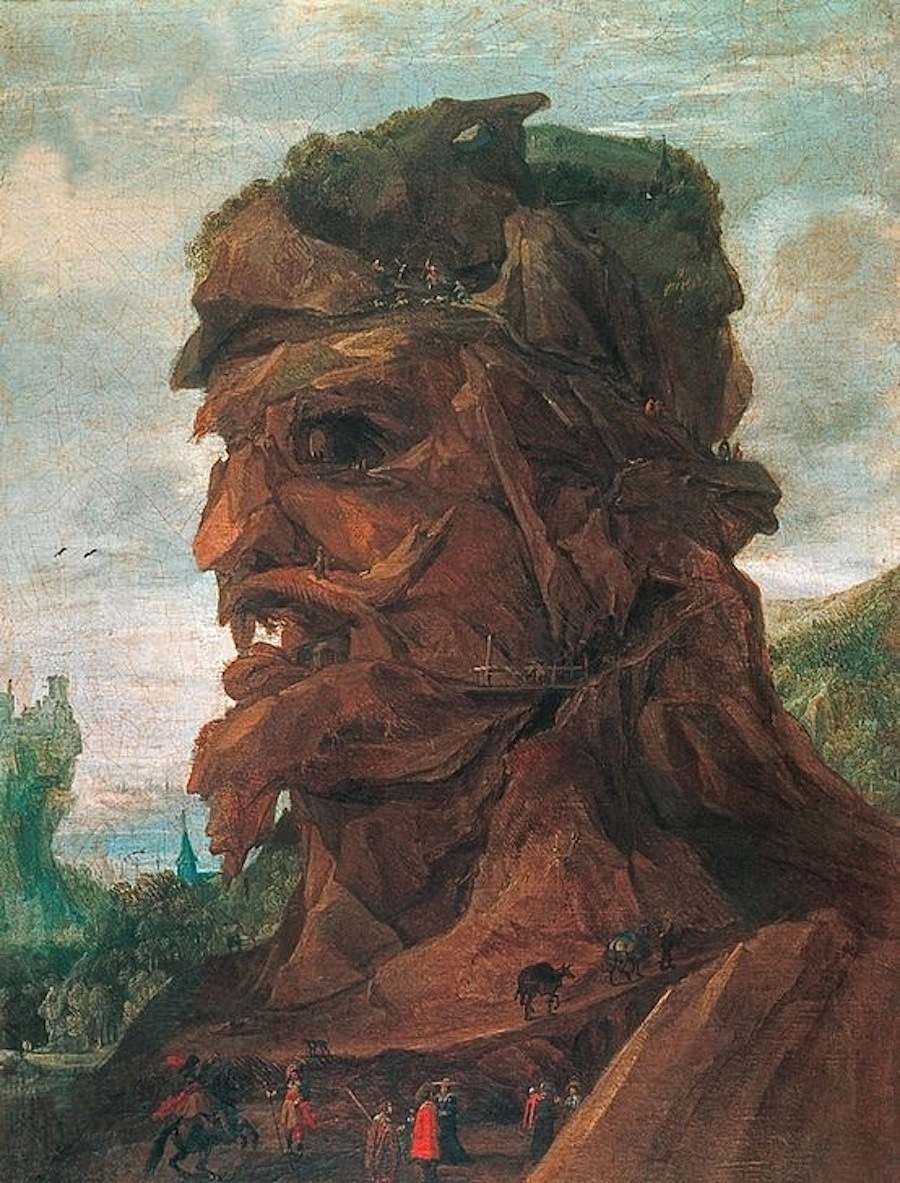
Joos de Momper’s Autumn, early 17th-century.
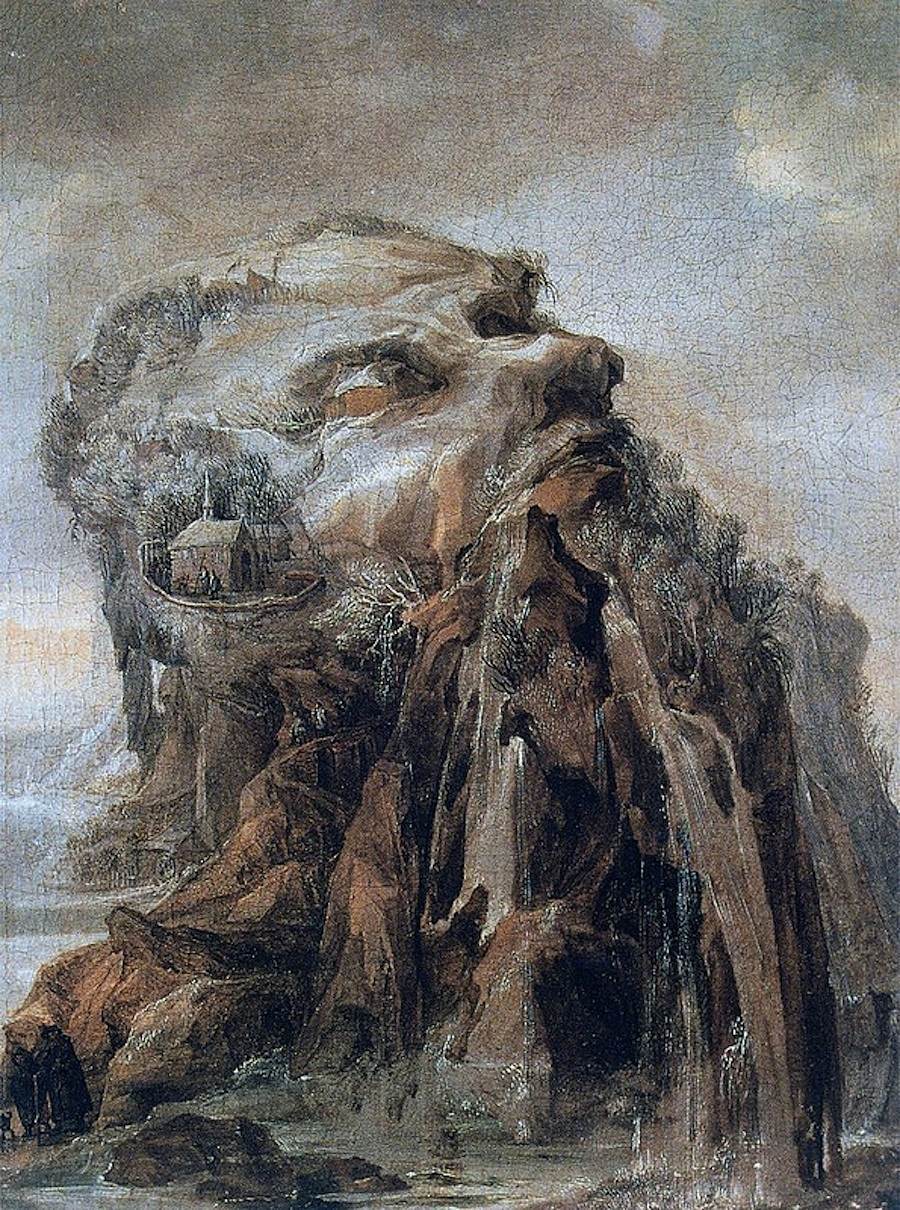
Joos de Momper’s Winter, early 17th-century.
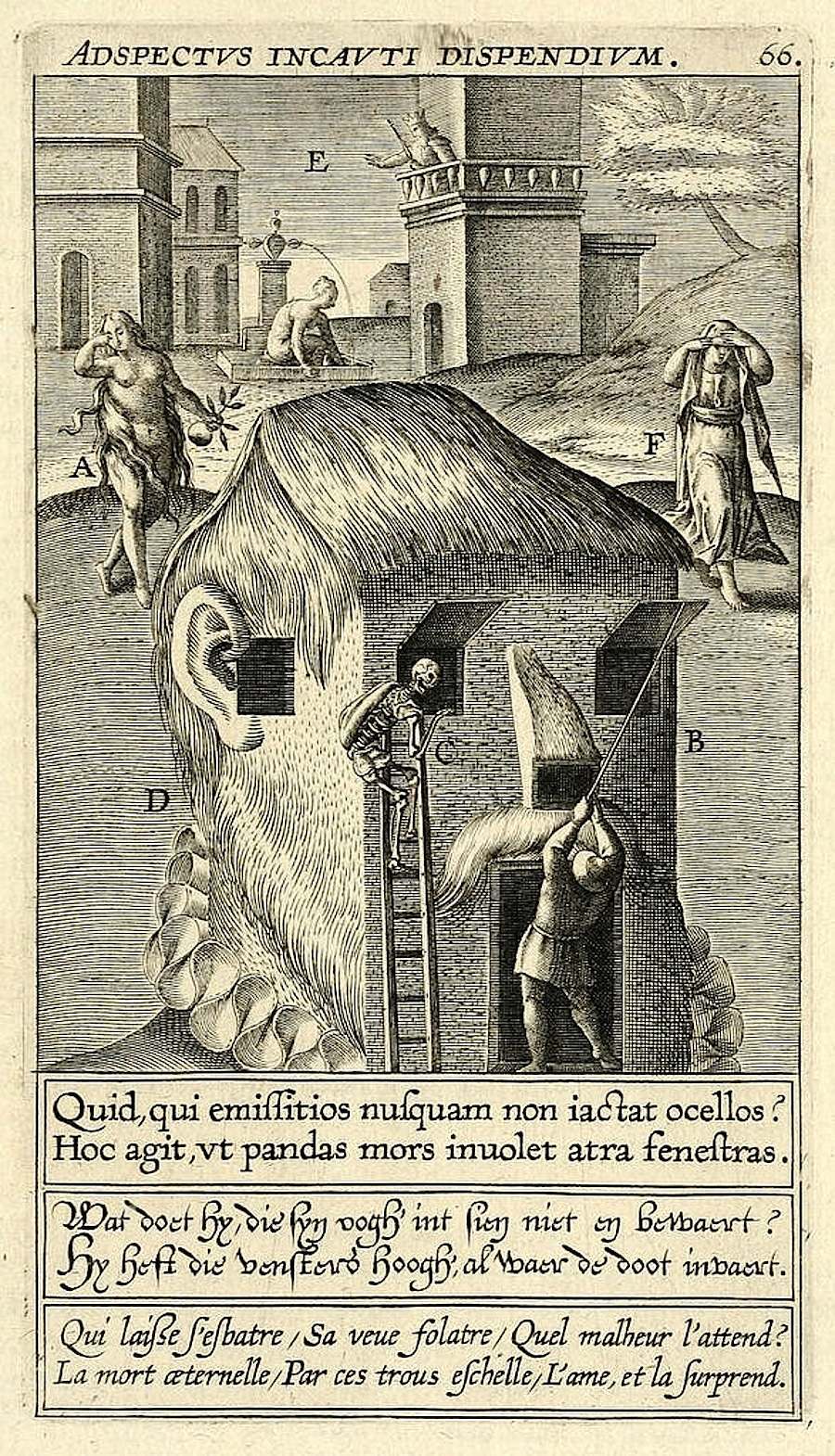
“The Incautious Gaze”, an image from Veridicus Christianus (1601).
Via Public Domain.
Would you like to support Flashbak?
Please consider making a donation to our site. We don't want to rely on ads to bring you the best of visual culture. You can also support us by signing up to our Mailing List. And you can also follow us on Facebook, Instagram and Twitter. For great art and culture delivered to your door, visit our shop.









